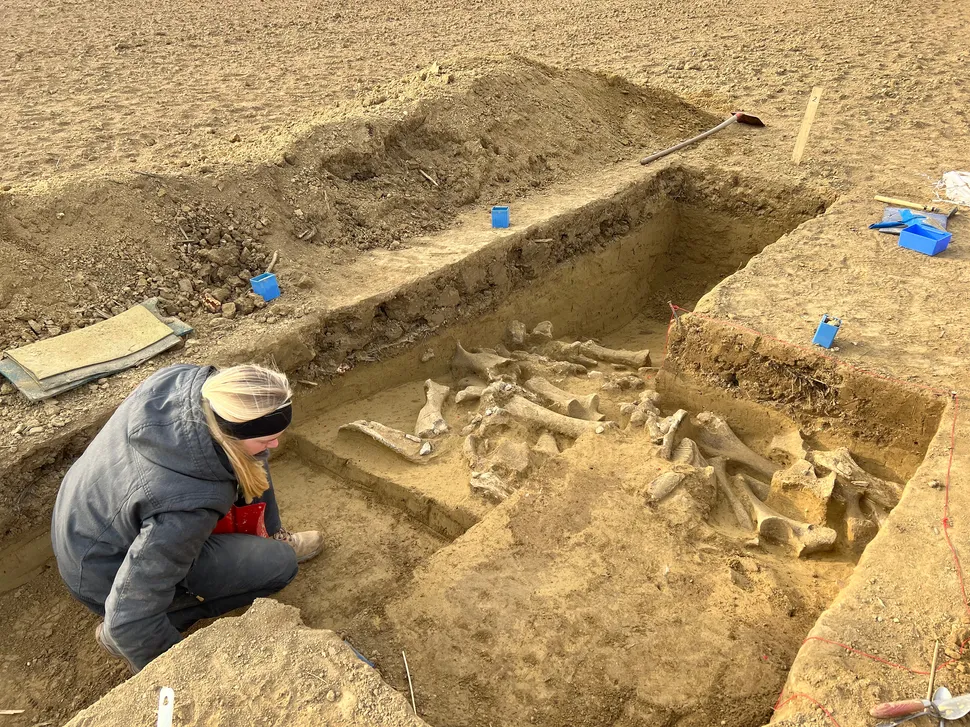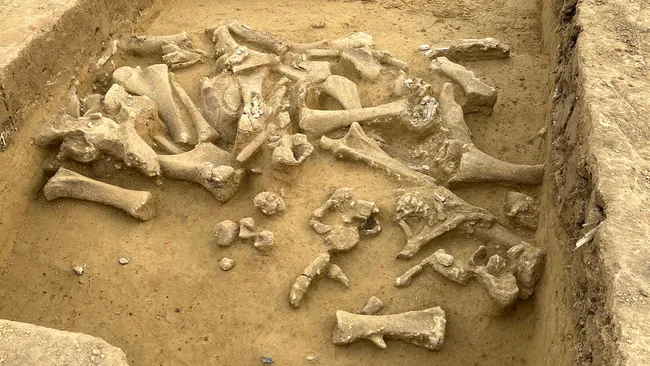Archaeologists have discovered the remains of at least five woolly mammoths at a site in Austria. The remains suggest that ancient humans processed the mammoths’ ivory tusks 25,000 years ago.
Archaeologists have uncovered the remains of five massive woolly mammoths in Austria, dating back 25,000 years — and evidence suggests they were hunted and butchered by ancient humans.
The discovery was made during an excavation at the Langmannersdorf site, located about 40 miles (65 kilometers) west of Vienna. The mammoth bones and tusks were found clustered in two distinct areas approximately 49 feet (15 meters) apart, researchers reported.
In one of these areas, the research team unearthed a pile of mammoth bones belonging to multiple individuals. Many of the bones bore marks and scars left by human tools, indicating they had been butchered. Additionally, stone tools were scattered nearby.

In the second area, researchers discovered the remains of at least three separate mammoths. Their massive tusks, both whole and fragmented, were found grouped together, apart from the bones. This suggests that Paleolithic humans were processing the ivory, likely for crafting tools such as spearheads, the archaeologists proposed.
“The fact that we discovered not just individual bones but intensively used areas where multiple animals were processed far exceeded our expectations,” said Marc Händel, an archaeologist at the Austrian Archaeological Institute of the Austrian Academy of Sciences (ÖAW). Previous findings have shown that ancient humans utilized mammoth ivory to create tools, including rope-making implements, ornaments, accessories, and hunting weapons such as spears and arrowheads.
Woolly mammoths (Mammuthus primigenius) were enormous, elephant-like mammals that stood about 11 feet (3.5 meters) tall and had large, curved tusks. During the last ice age, which ended around 11,700 years ago, these animals roamed across North America, Europe, and Asia. They played a crucial role in the survival of Paleolithic hunter-gatherers, providing food, bones for tools and shelters, and hides for warmth. Most woolly mammoths went extinct roughly 10,000 years ago, likely due to climate change and human hunting, though small populations persisted on isolated islands until about 4,000 years ago.
The Langmannersdorf site was initially excavated between 1904 and 1907, with evidence of two mammoth hunter camps discovered in 1919 and 1920. Since then, researchers from across Europe have continued to explore the site to gain deeper insights into the interactions between ancient humans and woolly mammoths.
Around 25,000 years ago, just before the last ice age peaked around 20,000 years ago, mammoth herds likely migrated through Austria’s Perschling Valley, grazing on grasses and shrubs along their journey. The discovery of this mammoth processing site at Langmannersdorf suggests that ancient humans had a strategic understanding of these migrations, timing their hunts to coincide with the animals’ seasonal movements.
This finding provides valuable insights into the hunting culture of Ice Age humans.
Researchers at ÖAW plan to analyze the mammoth bones, tusks, and stone tools to uncover further details about these prehistoric creatures and the people who hunted them. The remains will eventually be stored at the Natural History Museum in Vienna, with select artifacts displayed at the Perschling Valley Local History Museum (Perschlingtaler Heimatmuseum).
